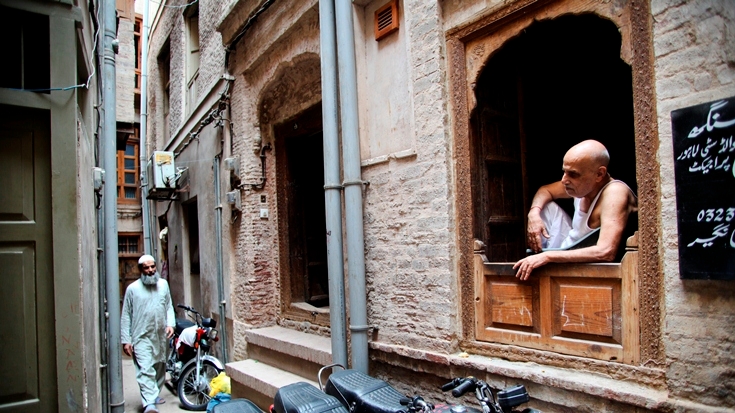As one enters the Delhi Gate of Lahore’s fabled Walled City, it is with the knowledge that travelers from across the world have walked through its grand arch for hundreds of years. The gate faces the historic path pointing towards its namesake city, serving as a reminder of South Asia’s interconnected history. Inhabited for over 1,000 years, Lahore's Walled City has served as the capital of Mughal and Sikh empires, along with being a major center of colonial India. Today, it continues to be a part of Pakistan's, and South Asia's, rich cultural heritage. As Lahore has grown and expanded beyond the Walled City, much of its grandeur has fallen into disrepair as newer areas became the center of investment.
Its historic houses, many stories tall as generations of families built on top of each other, have rich brick façades, flat roofs, richly carved wooden balconies and overhanging jharokas (windows with wooden shutters). Unplanned and haphazard construction has led to illegal encroachments and neglect of municipal services to open wiring and sewage in the streets. These not only compromise the beauty of the centuries-old buildings, but also cause traffic jams in the already narrow streets, putting their physical structures at risk and becoming a hazard to the inhabitants.
The Walled City of Lahore Authority (WCLA), an agency of the Government of Punjab, has been working to restore these neighborhoods, assisted by a World Bank project and valuable technical support from the Aga Khan Trust for Culture. Beginning from the Delhi Gate, the WCLA has restored a 383 meter-long heritage trail, leading up to Chowk Purani Kotwali. It encompasses a complete restoration of heritage architecture, and a replacement of infrastructure and services including underground telecommunications, electricity, gas, water and sewerage. Also included are encroachment removal, street paving, and street furniture.
Hafiz Zia, 53, is a lifelong resident of the locality and owns a stationery shop in Gali Surjan Singh, a fully restored model street of the project. He is also the Secretary General of the Community Based Organization of his neighborhood, formed by the WCLA, consisting of local residents as part of the project. “Before the restoration work was done, water would enter our shops during the monsoon causing huge losses,” he says, recalling the state of the streets he grew up in. Now, “We enjoy the monsoon rain instead of worrying about our losses or how to control flood water,” he says, calling the project a “dream come true” for the entire community.
Twenty-three houses have been restored in Gali Surjan Singh, of which 13 were restored fully, including interiors. Sher Mohammad Jehangir’s family has lived in their house for four generations. The restoration work, he says, has raised their quality of life and that of their locality. ”The restoration has created a sense of participation in improving our living conditions.”

